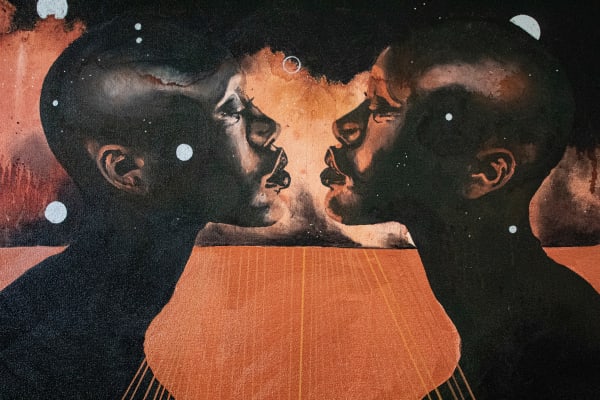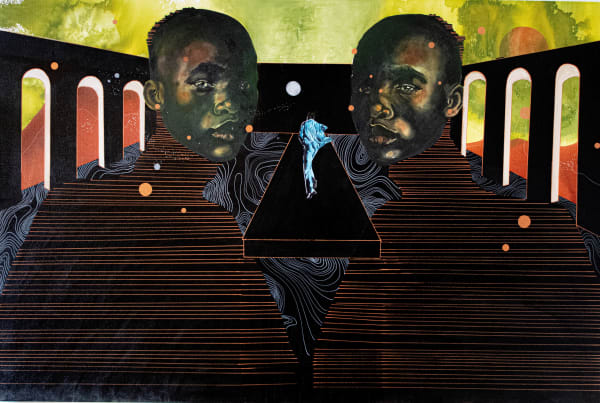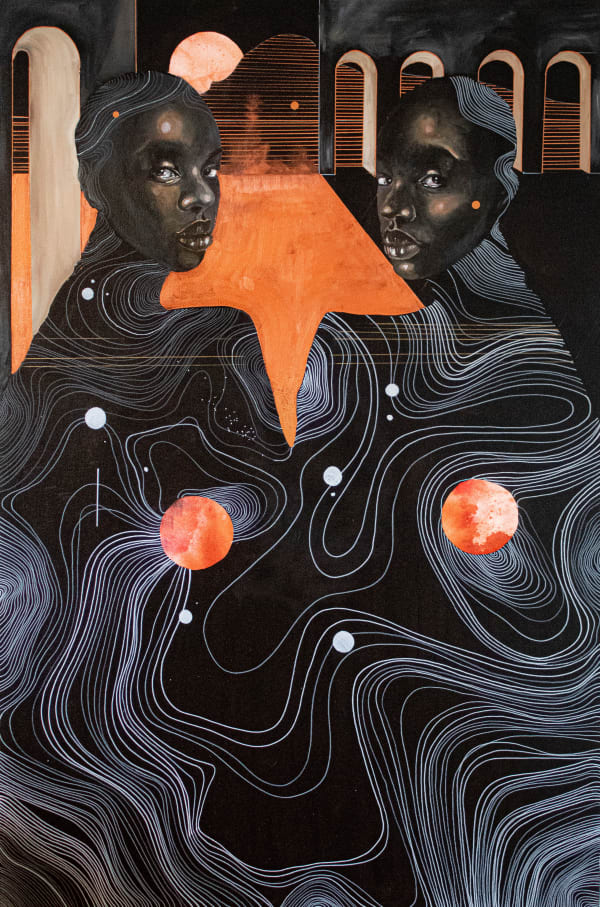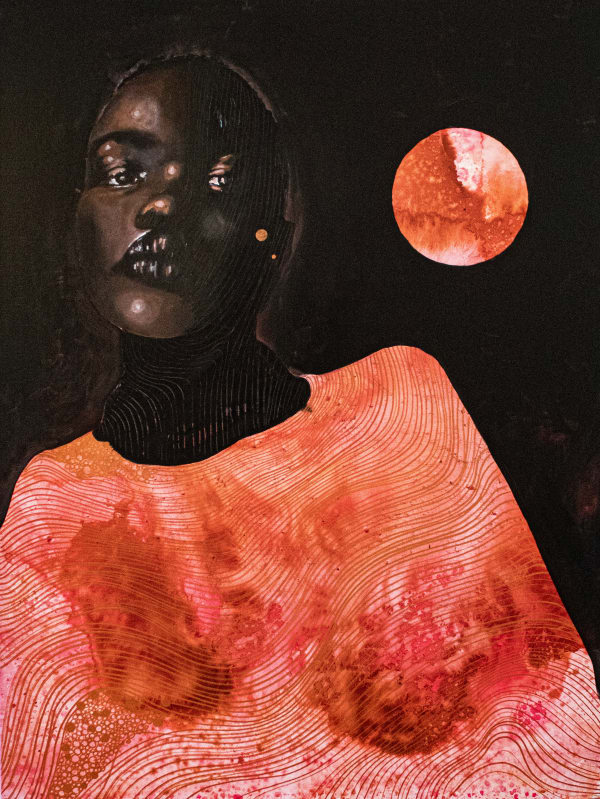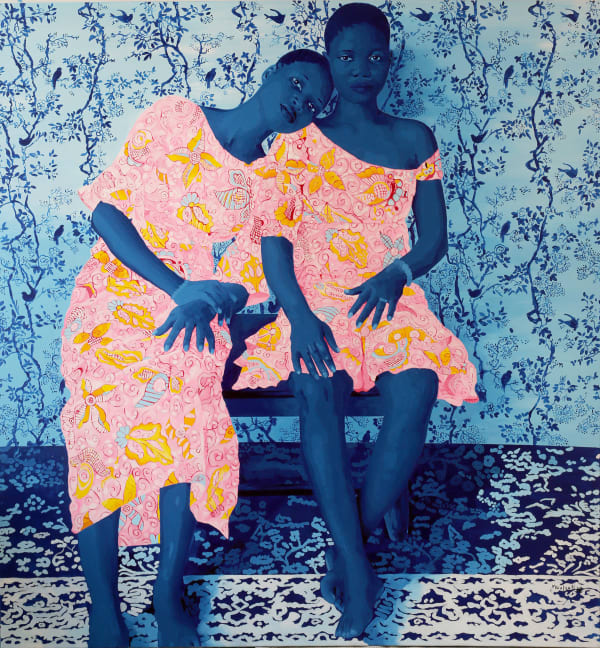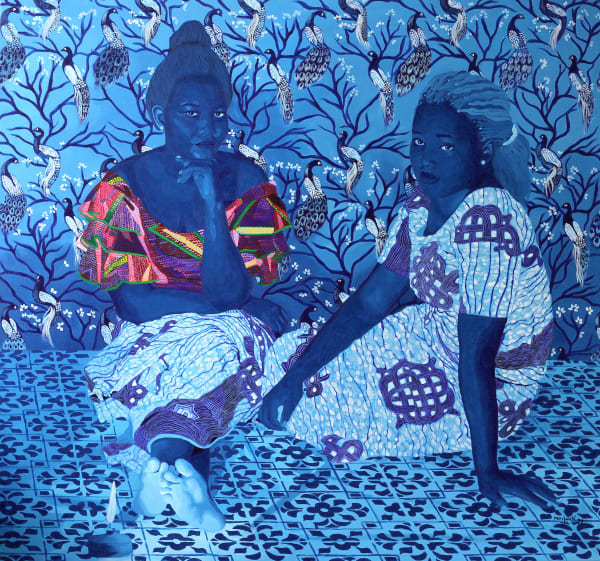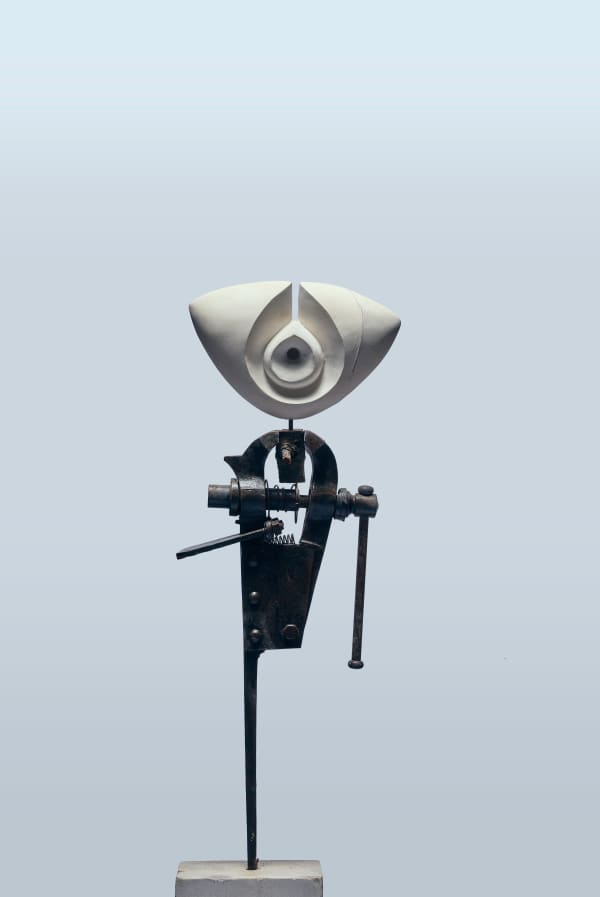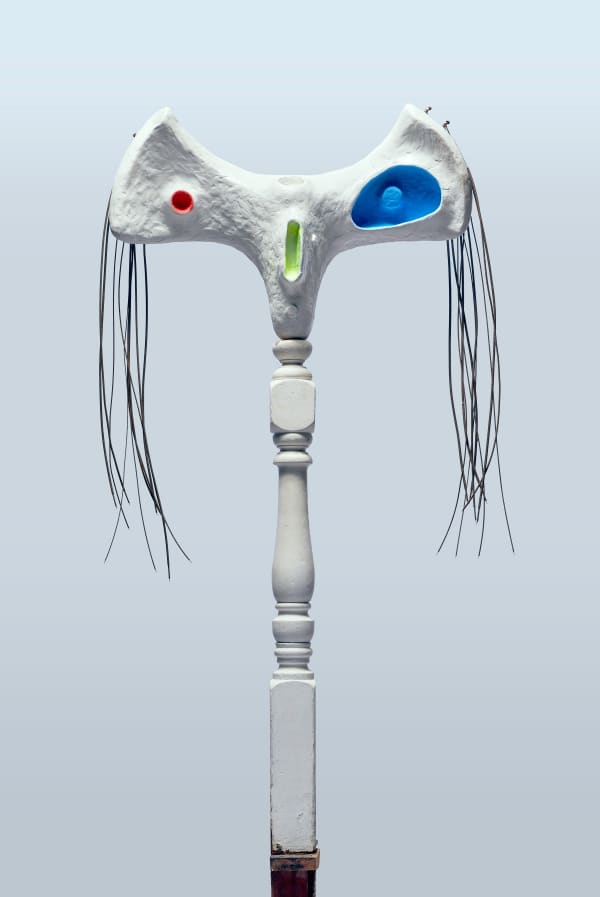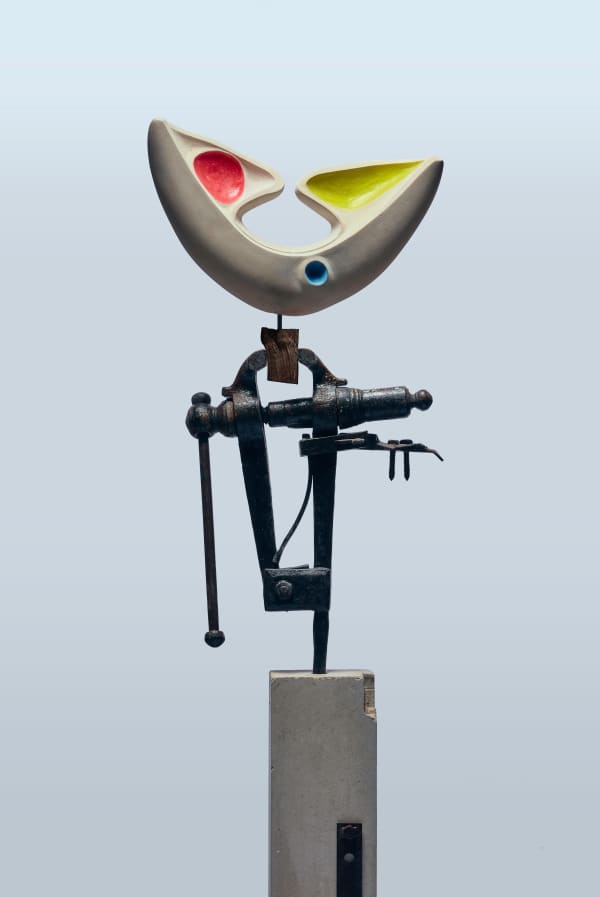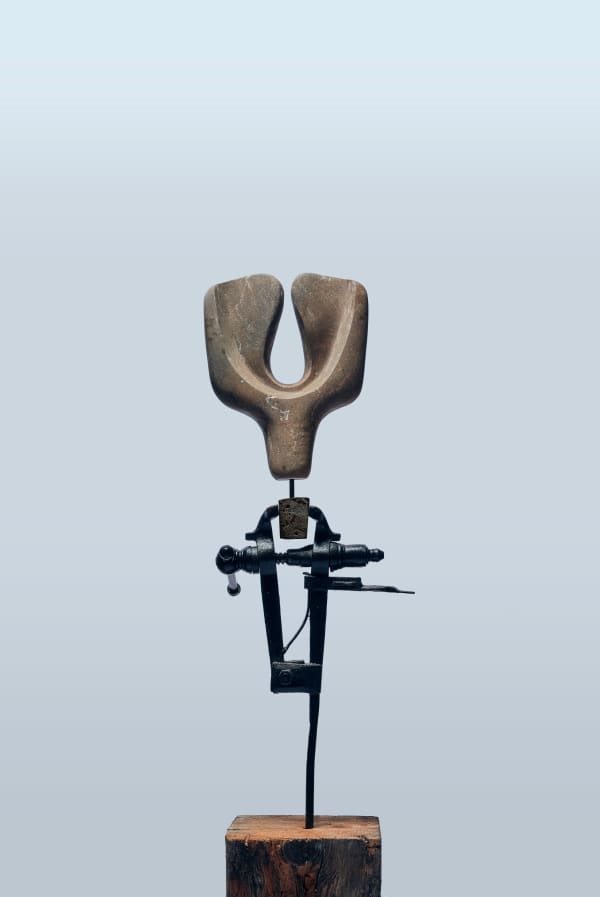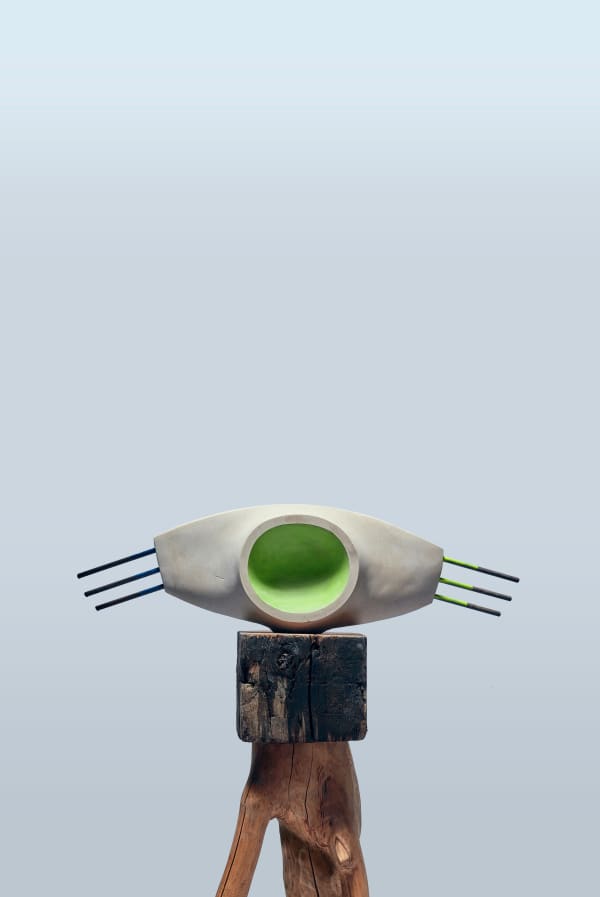SMO Contemporary Art is pleased to present LITTLE BIG SISTER, an exhibition of works by Moufouli Bello, Manyaku Mashilo and Gary March at 1.54’s 10th Anniversary African Contemporary Art Fair in London.
LITTLE BIG SISTER draws inspiration from the fundamental networks of guardianship, protection, and caring within African and Diasporan communities the world over. Strong family and communal bonds and the complex dynamics of the evolution of societies and the intimacy of being are explored in Moufouli Bellos paintings. Manyako Mashilo’s portraits set in abstract cosmological landscapes delve into a plurality of rich African traditions, touching on diverse identities and the physical and spiritual inter-relationships of shared beliefs. While Gary March’s sculptures of reclaimed and recycled materials show the critical cross-section between identity, culture and the local environment in each of his creations. Each artist brings to the surface the physical and spiritual ties which bind us, and the power of these Little Big Sister relationships: a starting point to unfolding the rich tapestry of inter-dependence, memory, ancestry, and belonging within our communities.
-
-

-
Photographical archives, both public and personal, can tell us who we are, and help us to imagine who we might be in the future. My concerns with most historical archives of black communities are around the way we are represented. This representation minimizes or distorts the spiritual philosophies, shared beliefs, and rich tradition of Africa and the diaspora. In my work, I seek to address these concerns.My process starts with extracted images from personal family archives, memory, and historical photographs as well as gathered images from instagram, fashion magazines and online blogs that give insights into the lives, movements, rituals and identities of black figures and communities in the past and present.I am especially interested in group photographs of black communities: people in ceremonies and rituals, on journeys, or even just images of people waiting in queues or in meetings. I see a form of musicality and spiritual energy in these images, and they trigger a deep nostalgia. I imagine what the conversations are being had, what they were waiting for, or where they were going.Several layers of people are cut from these photographs. I then arrange, on top of them, hand-drawn abstractions to create compositions, first as digital collages and then as large paintings that map out an imagined world where figures dressed in white, representing spirits and ancestors, migrate across cosmological landscapes, leading journeys through unknown doors and into unknown places.I would like to create scenes which free my characters from a certain idea of Blackness that is imposed or projected on them by removing them from the context of the found photographs and placing them in a different and more spiritually inspired setting: a setting that allows them to exist freely in motion or stillness and inspires journeying to a place of healing and new beginnings.
-
-
-
Moufouli Bello is a lawyer by training, and is passionate about digital and plastic arts. She is interested in ideological structures, such as traditions, cultures, politics and technology, which influence our perception of society, emotions, behaviors and other various mutations. Issues relating to identity, gender equality and human rights for all life forms are central to Bello’s work. Her research emphasizes the interaction between the dynamics of the evolution of societies and the intimacy of being. The artist questions the ubiquitous systemic problems at the economic and geopolitical levels, but also the influence of religions, which shape our perception of reality. She explores and combines several techniques; from painting to photography to digital manipulations.
-
-

-
Gary March’s creative process relies on the acquisition of found and discarded objects and materials. This approach causes him to stand out among his contemporaries. He touches on the topics of human identity and culture and the ongoing debate between sustainability, environment and waste. The materials he uses in his work determine the outcome of each project, because like DNA they adapt from an old version, to this new version of the world. An opportunity to imagine a new environmentWorking outside in the natural world, he considers himself a soul that is experiencing the universe through creativity. Growing up in Birmingham, Midlands, an industrial town which flourished as a factory city in the 70’s, his work serves as a dialogue for discussing racial and social inequality. This was a harsh reality to live in for a Caribbean kid. Constantly hearing, “you are not good enough”, “you are too different”, March decided to control his own narrative to create an emotional exchange between unwanted materials and his own cultural experiences.Furthermore, March’s work is an effort towards not only representing the environment he comes from but to also preserve it. His artistic works are a unique way of exploring sustainability, waste and the environment. The process is challenging as March still wants his works to contain echoes of our environment, even after they have been transformed from “rubbish” to art.



